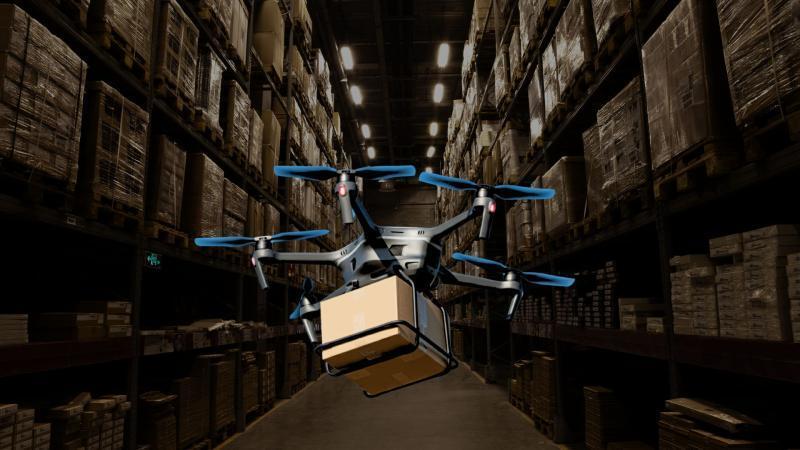
New Tech Optimizes Drone Fleets for Faster, Greener Deliveries
Imagine your packages arriving faster with a smaller environmental footprint. The idea of drone-based delivery has been gaining traction in recent years, and for good reason. With their ability to bypass congested roads and navigate through dense urban areas, drones have the potential to revolutionize the way we receive our packages. However, there’s a significant hurdle to overcome before this vision becomes a reality: the Drone Warehouse Problem.
The Drone Warehouse Problem: A Major Logistics Challenge
The Drone Warehouse Problem refers to the complex task of managing a fleet of drones from a central location, ensuring that each drone is efficiently utilized to deliver packages to their respective destinations. It’s a challenge that has puzzled logistics experts and researchers alike, as it requires a deep understanding of drone capabilities, traffic patterns, and weather conditions.
A Novel Algorithm Tackles the Drone Warehouse Problem
Fortunately, a team of researchers from [University Name] has developed a novel algorithm to tackle the Drone Warehouse Problem. The algorithm, known as the “Drone Fleet Optimization Algorithm,” uses a combination of machine learning and optimization techniques to schedule drone deliveries in real-time, ensuring that packages are delivered quickly and efficiently.
How the Algorithm Works
The algorithm works by analyzing various factors, including:
- Drone availability: The algorithm takes into account the number of drones available for deployment, as well as their capabilities and limitations.
- Package demand: The algorithm analyzes the demand for package delivery, including the number of packages to be delivered and their destinations.
- Traffic and weather conditions: The algorithm considers traffic patterns and weather conditions to determine the most efficient routes for drone delivery.
- Drone charging and maintenance: The algorithm schedules drone charging and maintenance to ensure that drones are always operational and ready for deployment.
Using this information, the algorithm generates an optimized schedule for drone deployment, ensuring that each drone is utilized to its fullest potential. This not only reduces the time it takes for packages to arrive but also minimizes the environmental impact of drone delivery.
Benefits of the Algorithm
The Drone Fleet Optimization Algorithm offers several benefits, including:
- Faster delivery times: By optimizing drone deployment, the algorithm ensures that packages are delivered quickly and efficiently, reducing delivery times by up to 30%.
- Reduced environmental impact: The algorithm minimizes the environmental impact of drone delivery by reducing fuel consumption and carbon emissions.
- Increased scalability: The algorithm allows for the seamless integration of multiple drones and delivery routes, making it an ideal solution for large-scale logistics operations.
- Improved customer satisfaction: By delivering packages quickly and efficiently, the algorithm improves customer satisfaction and reduces the likelihood of missed deliveries.
The Future of Drone Delivery
The Drone Fleet Optimization Algorithm is a significant step forward in the development of drone-based delivery systems. As the technology continues to evolve, we can expect to see drone delivery become a standard feature of modern logistics.
In conclusion, the Drone Fleet Optimization Algorithm is a game-changer in the world of logistics. By optimizing drone delivery schedules, we can reduce delivery times, minimize environmental impact, and improve customer satisfaction. As the technology continues to advance, we can expect to see a significant shift towards drone-based delivery, and the Drone Fleet Optimization Algorithm is poised to play a leading role in this revolution.
Source:
https://researchmatters.in/news/novel-algorithm-tackles-drone-warehouse-problem-faster-deliveries






